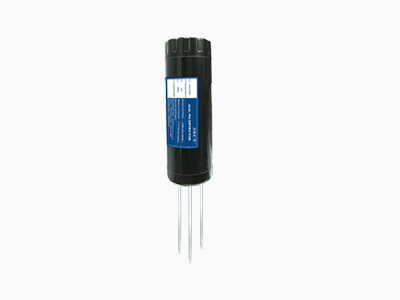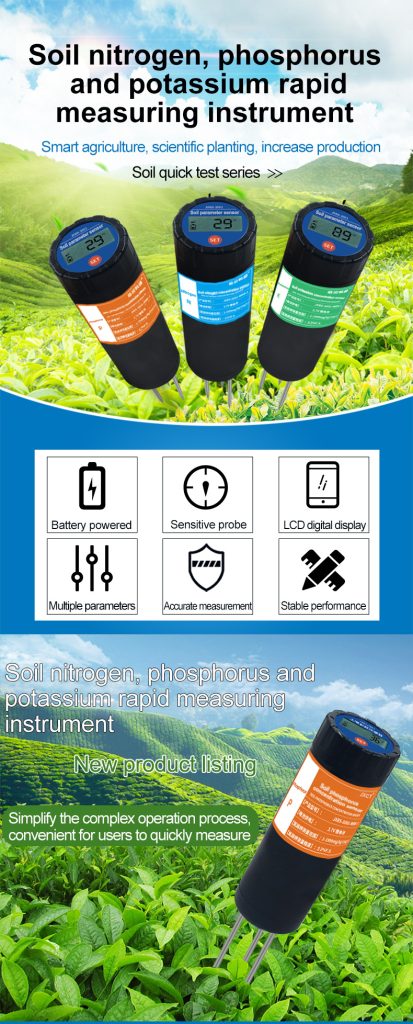Introduction:
Agriculture has been the backbone of human civilization for thousands of years. Over time, farmers have developed various techniques and technologies to improve crop yields and ensure food security. One such advancement in recent years is precision farming, which aims to optimize crop production by making informed decisions based on real-time data.
Precision farming relies heavily on accurate and timely information about soil conditions, including nutrient levels. Traditionally, farmers have relied on labor-intensive and time-consuming methods such as soil sampling and laboratory testing to determine nutrient levels. However, these methods are often expensive, slow, and provide only a snapshot of the soil’s nutrient status.
To address these challenges, scientists and engineers have developed a revolutionary technology called the Soil NPK Sensor. This sensor enables farmers to measure the levels of nitrogen (N), phosphorus (P), and potassium (K) – the three primary macronutrients required by plants – in real-time, directly in the field.

Functionality and Benefits:
The Soil NPK Sensor operates by using near-infrared spectroscopy to analyze the soil’s composition. It emits a beam of light onto the soil surface and measures the reflected light to determine the nutrient levels. The data collected by the sensor is then transmitted wirelessly to a computer or mobile device, where it can be analyzed and interpreted.
The benefits of using the Soil NPK Sensor in precision farming are manifold. Firstly, it provides farmers with instant and accurate information about the nutrient levels in their soil. This allows them to make timely decisions regarding fertilization, ensuring that plants receive the right amount of nutrients at the right time. By avoiding over or under-fertilization, farmers can optimize crop yields and minimize environmental impact.
Secondly, the Soil NPK Sensor enables farmers to monitor nutrient levels throughout the growing season. This is crucial as nutrient requirements may change over time due to factors such as weather conditions, crop growth stage, and soil degradation. By continuously monitoring nutrient levels, farmers can adjust their fertilization strategies accordingly, maximizing nutrient uptake and minimizing waste.
Furthermore, the Soil NPK Sensor helps farmers identify nutrient deficiencies or imbalances early on. Nutrient deficiencies can lead to stunted growth, reduced yields, and increased susceptibility to diseases and pests. By detecting these issues early, farmers can take corrective actions, such as targeted fertilization or soil amendments, to prevent crop losses and maintain plant health.

Challenges and Future Developments:
While the Soil NPK Sensor holds immense potential for revolutionizing agriculture, there are a few challenges that need to be addressed. Firstly, the cost of the sensor and associated technology may be prohibitive for small-scale farmers in developing countries. Efforts should be made to make the technology more affordable and accessible to ensure its widespread adoption.
Secondly, the accuracy and reliability of the sensor need to be further improved. While the technology has shown promising results, there is still room for refinement. Calibration protocols and data interpretation algorithms need to be developed to ensure consistent and precise measurements across different soil types and environmental conditions.
In terms of future developments, researchers are exploring the integration of the Soil NPK Sensor with other precision farming technologies. For example, combining the sensor data with satellite imagery and weather forecasts can provide farmers with a comprehensive understanding of their fields’ nutrient requirements. Additionally, advancements in machine learning and artificial intelligence can help automate data analysis and decision-making processes, further enhancing the efficiency and effectiveness of precision farming.
Conclusion:
The Soil NPK Sensor represents a significant advancement in precision farming, enabling farmers to make data-driven decisions regarding nutrient management. By providing instant and accurate information about soil nutrient levels, the sensor helps optimize crop yields, minimize environmental impact, and ensure food security. While there are challenges to overcome and further developments to be made, the future of agriculture looks promising with the integration of this revolutionary technology.